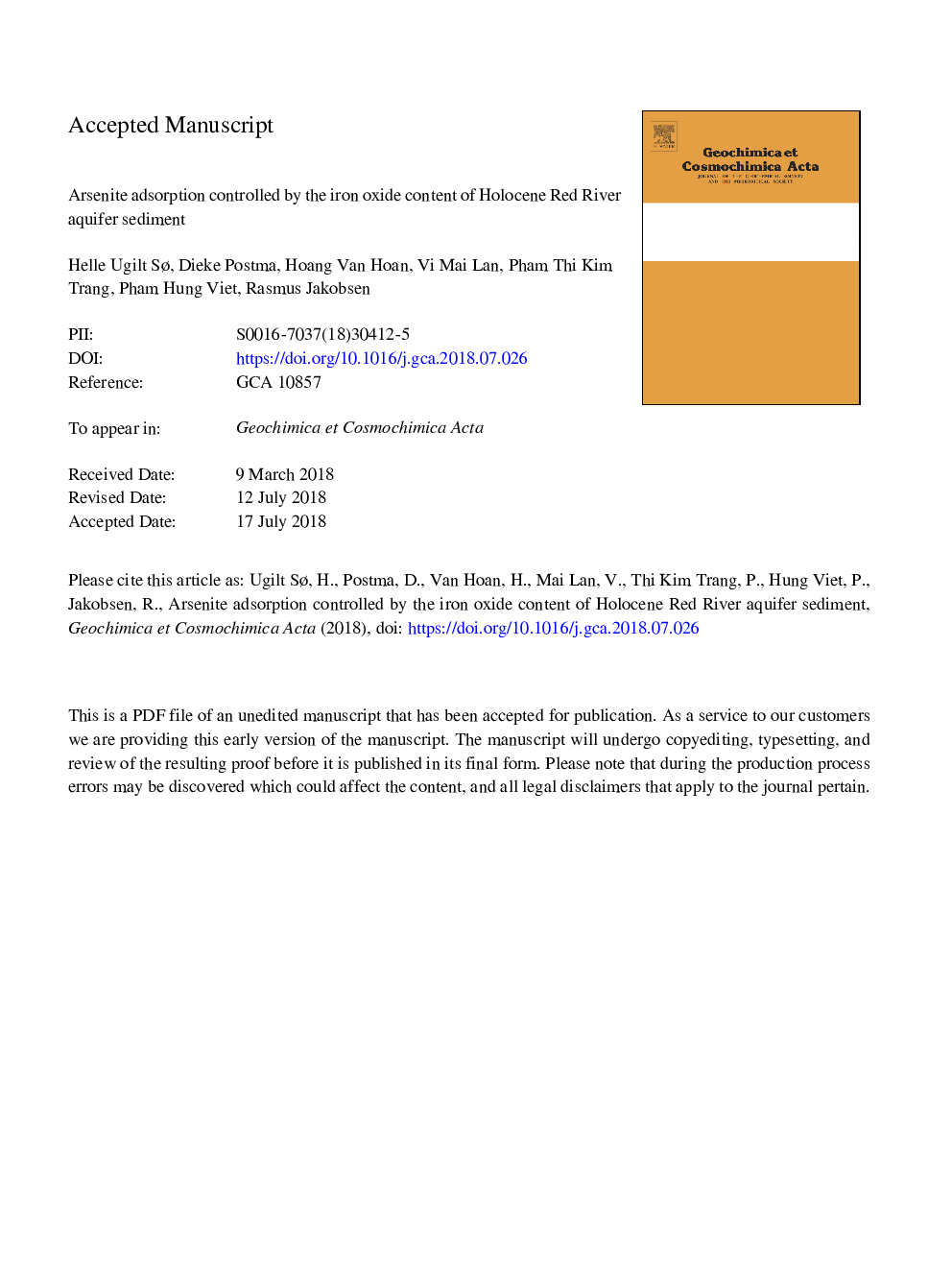| Article ID | Journal | Published Year | Pages | File Type |
|---|---|---|---|---|
| 8910564 | Geochimica et Cosmochimica Acta | 2018 | 37 Pages |
Abstract
The adsorption of As(III) onto reduced sediment from Holocene aquifers in the Red River floodplain, Vietnam, was studied in batch experiments under strict anoxic conditions using sandy sediments from four different sites with a sediment burial age between 600 and 3500â¯years. Sediments containing the highest content of Fe-oxide showed the highest As(III) adsorption capacity. Removal of the Fe-oxides from the sediment by reductive dissolution significantly reduced the As(III) adsorption capacity of the residual sediment. Normalizing the adsorption of As(III) to the amount of Fe-oxides in the untreated sediments resulted in almost identical adsorption isotherms. We therefore conclude that Fe-oxides are the main adsorbents for As(III) in these reduced aquifer sediments. However, the properties of the sedimentary Fe-oxides are different from those of synthetic Fe-oxides since we found that adsorbed As(III) is not displaced by phosphate and neither is the adsorption of As(III) influenced by changes in pH between 6.2 and 7.5. In the absence of competition for surface sites, As(III) adsorption onto aquifer sediment can be described by a Langmuir isotherm normalized to the amount of Fe-oxides present in the sediment. The finding that the As(III) adsorption capacity depends on the Fe-oxide content of the sediment implies that the As(III) sorption capacity will decrease over time because of reductive dissolution of Fe-oxides, which again is coupled to the burial age of the sediment. In consequence, reactive transport models need to include how aquifer properties, like sorption capacity, change as a function of the extent of chemical reaction.
Related Topics
Physical Sciences and Engineering
Earth and Planetary Sciences
Geochemistry and Petrology
Authors
Helle Ugilt Sø, Dieke Postma, Van Hoan Hoang, Lan Vi Mai, Trang Pham Thi Kim, Viet Pham Hung, Rasmus Jakobsen,
